Welcome to our comprehensive tutorial on using the Macro Recorder in VBA (Visual Basic for Applications). Whether you’re an Excel beginner or a seasoned user looking to automate repetitive tasks, the Macro Recorder is an invaluable tool. In this guide, we’ll cover everything you need to know about the Macro Recorder, including step-by-step instructions and tips for optimizing your workflows.
What is the Macro Recorder?
The Macro Recorder in VBA allows you to record your actions in Excel and convert them into a VBA macro. This is particularly useful for users who may not be familiar with programming but want to automate tasks. The Macro Recorder captures your keystrokes and mouse clicks, generating the corresponding VBA code.
Why Use the Macro Recorder?
- Ease of Use: No programming knowledge is required; simply perform the actions you want to automate.
- Time-Saving: Quickly record repetitive tasks, saving you hours of manual work.
- Learning Tool: Great for beginners to learn how VBA works by analyzing the recorded code.
Step-by-Step Guide to Using the Macro Recorder
Step 1: Enable the Developer Tab
- Open Excel.
- Go to File > Options.
- In the Excel Options window, select Customize Ribbon.
- Check the box next to Developer and click OK.
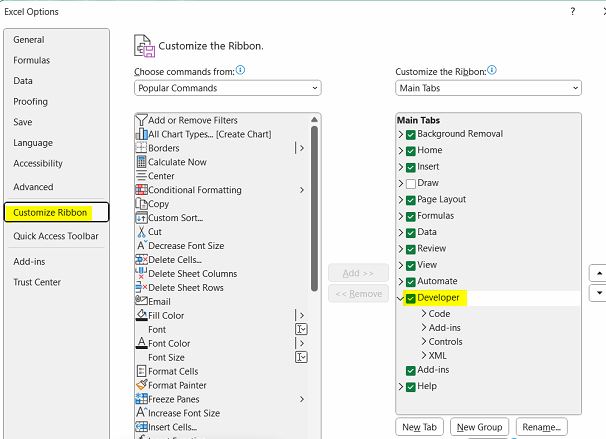
Step 2: Start Recording a Macro
- Click on the Developer tab in the ribbon.
- Click on the Record Macro button.
- In the Record Macro dialog box, enter the following:
- Macro Name: Give your macro a descriptive name (no spaces).
- Shortcut Key: Assign a shortcut key (optional).
- Store Macro In: Choose where to save your macro (this workbook, new workbook, or Personal Macro Workbook).
- Description: Add a brief description of what the macro does (optional).
- Click OK to start recording.
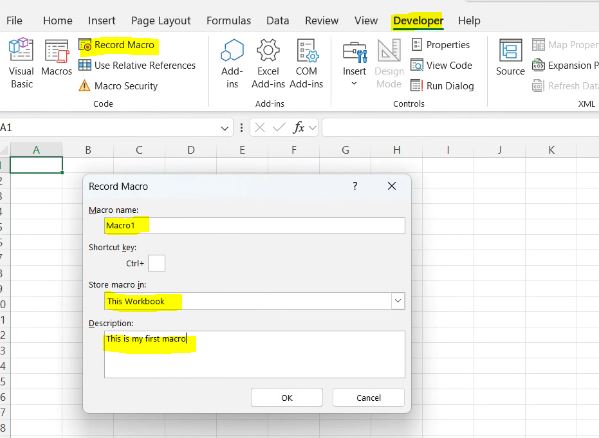
Step 3: Perform Your Actions
Now that recording has started, perform the actions you want to automate. This could include formatting cells, entering data, or creating charts. Remember, every action you take will be recorded.
Step 4: Stop Recording
- Once you’ve completed your tasks, go back to the Developer tab.
- Click on Stop Recording.
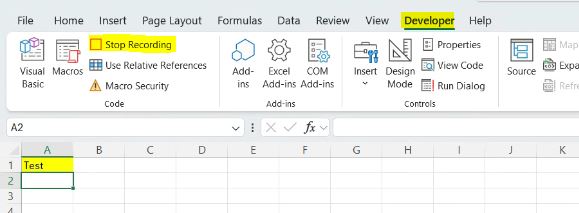
Step 5: View and Edit the Recorded Macro
- Click on Macros in the Developer tab.
- Select your macro from the list and click Edit. This will open the VBA editor.
- Analyze the code and make any necessary modifications.
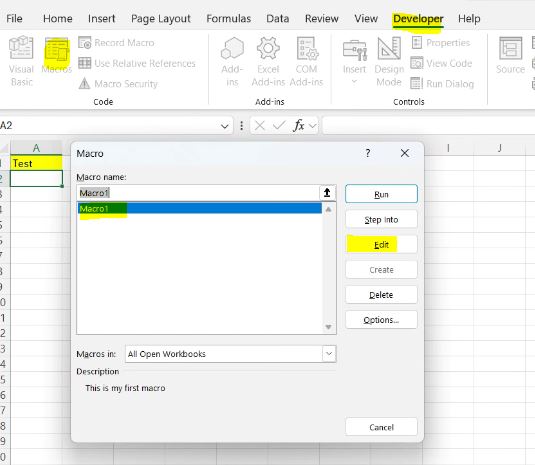
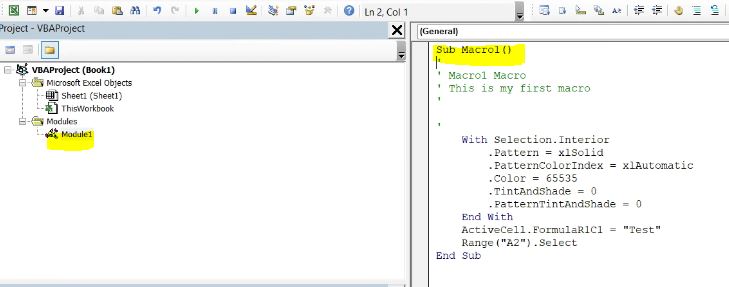
Tips for Optimizing Your Macros
- Keep It Simple: Start with simple tasks to understand how the Macro Recorder works.
- Edit Recorded Code: Clean up the recorded code for efficiency. The Macro Recorder often includes unnecessary lines.
- Comment Your Code: Use comments to explain what each part of your code does for future reference.
- Use Relative References: If you want your macro to work regardless of where the active cell is, enable Use Relative References in the Developer tab before recording.
The Macro Recorder in VBA is a powerful tool for automating tasks in Excel. By following this tutorial, you can quickly create macros that save you time and effort. Experiment with different task.
Want to know more? Contact us…